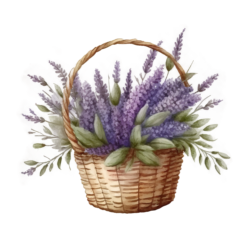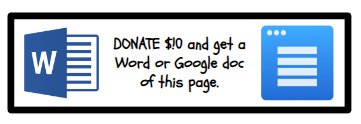

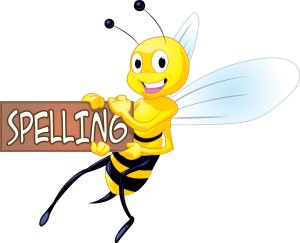 VectorStock Image
VectorStock Image
- Check out: 44 Phonemes
- Please check out my Sound Wall page!
- Check out – Listen, Practice, and Master all the Sounds!
- Check out the frequency for each spelling, such as long /A/. The most frequent spelling of long a is at the end of open syllables, as in ba-con; the second most frequent is a_e as in bake. The attached PDF also shows the probability that when you see a word with, for example, a_e, it says long /A/ 78% of the time. (22% of the time, it says something else, e.g., /a/ in have.) Spelling Frequencypelling Rules and 44 Phonemes
Consonants
voiced and unvoiced sounds. Voiced is when vocal cords vibrate. Here is a COOL trick. Have your students firmly cover their ears and say all the letter sounds. The ear has to be flattened out and blocked directly by the hand – long hair must be moved out of the way. There is a vibration/ringing when these voiced sounds are made!
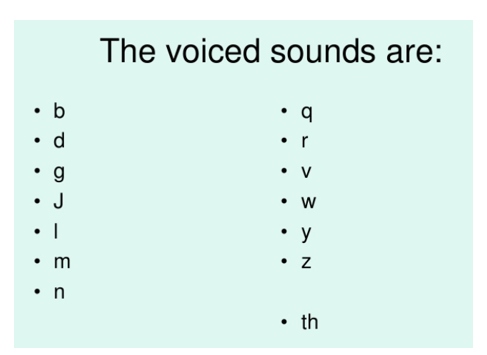
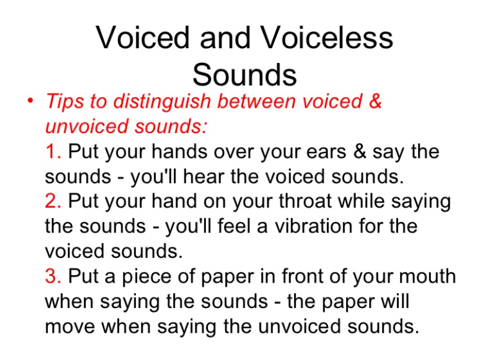
Consonant blends make 2-3 sounds – br, cl, spl, sp, thr, squ, gl, pl. . .
wh words – the h is silent – whale, wheel, whip ***Here is a trick to determine if the spelling is wh or w! Put your fingers outside of your lips to feel your breath. Now say wh words such as whale, what, whisper. You can FEEL the puff of air. Now say non-wh words such as word, water, way. There is no puff of air! ***
ck or k – ck is used at the end of 1 syllable word after 1 short vowel: back, deck, clock; c is used for the final /k/ sound when the word has 2 or more syllables: music, traffic, Atlantic, historic
tch words – the t is silent – catch, hitch, stretch
The “t” is there to touch the short vowel. Otherwise, we don’t need it:
march brunch inch crunch
exceptions:
rich, such
dge words – the d is silent – judge, edge bridge. It’s there to touch the single short vowel. If it’s a long vowel word, we don’t need the d: stage, huge. If a consonant touches the vowel, we don’t need the d: lunge, hinge; “j” is NEVER used at the end of a word.
c usually sounds like s next to e, i, and y – cent, city, cymbals
Is it c or k? K takes i and e – kit, Ken. C takes the other 3 – cat, cot, cut.
g usually sounds like j next to e, i, and y – gem, giraffe, gym – get and give are exceptions
gu makes the hard g sound – guest, guitar, guide. Otherwise, ge and gi sound like /j/; the u keeps the g hard.
words never end with v alone – have, brave, believe – but names don’t count (Bev)
words never end with j alone – age, gouge
in the middle of words, the /j/ sound is usually represented by ge, gi, gy – (margin) except for the word pajamas.
gh at the end of words/ph both have /f/ sound – cough, telephone
ch can make 3 sounds – chase, Christmas, chef
silent letters – write, thumb, knife, gnaw
FLoSS rule – double f, l, s (and z) – if the word has 1 syllable ~ fluff, hill, mess (There are some exceptions, like bus – which originated from the French word omnibus, or when s sounds like z as in is/was or f sounds like v as in of. A trick to teach students is that function words like is, this, was stay as short as possible. Content words like off, pill, less are longer because they are more important.)
Question words – who** – sounds different from the other wh question words, what, where, when, why, how, could, should, would (spell by saying “o u lucky dog” which is “ould”), do, does, did
Pronunciation
When s is after an unvoiced consonant, it is pronounced as /s/ – hats, laughs, what’s, moths.
When the letter ‘s’ is after a vowel, between 2 vowels, or after a voiced consonant, it is pronounced as /z/ – logs, tubes, passes.
Digraphs – there can be consonant and vowel digraphs
Consonant and vowel digraphs are 2 letters that make 1 sound – th, ch, sh, wh, ai, oa, ck, ee, ea, oo. . .
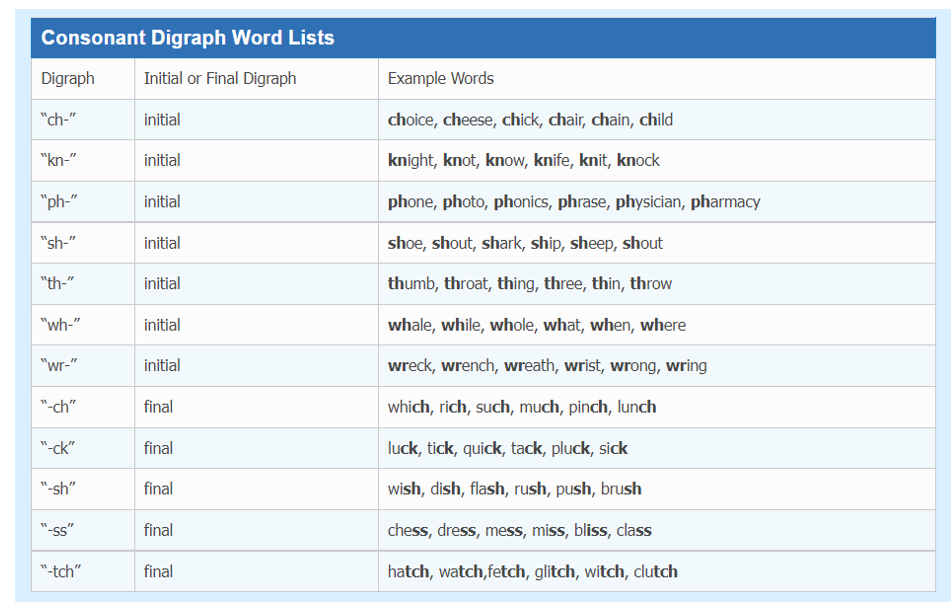
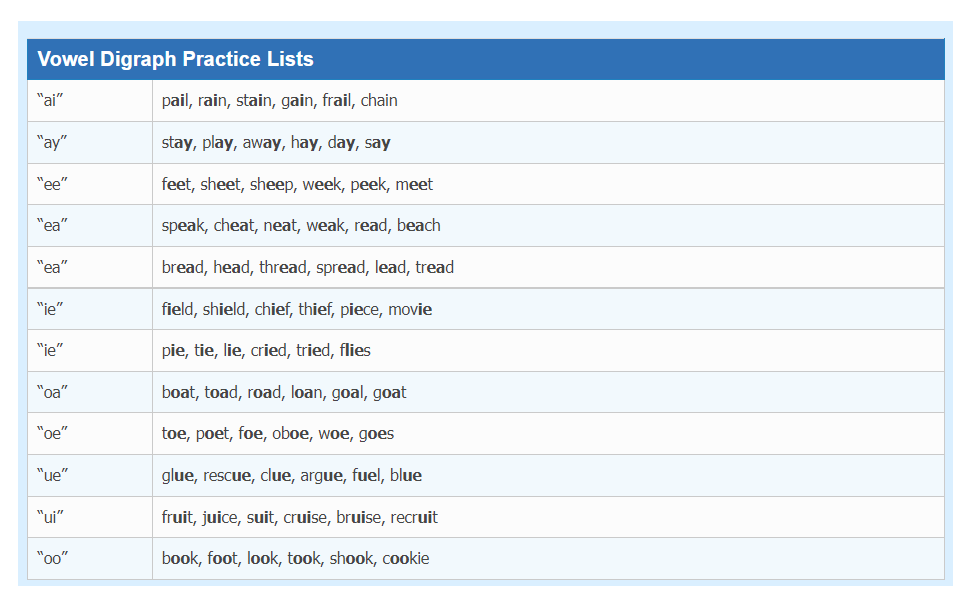
Please see my Decodables page to get your copy of my 900-page short and long vowels document!
An idea from Moats (2000) is to create words using the same two consonants to demonstrate the changes in the vowel sounds. Check out my Sound Wall page. For example, use b/t:
- beet
- bit
- bait
- bet
- bat
- bite
- bottle
- but
- bought
- boat
- book
- boot
Vowels
Silent e makes the vowel say its name, not its sound.
cake Pete hide lone tube
More About Silent E
- Silent e helps keep some words from looking like plurals, as in please ~ not pleas, and house ~ not hous.
- v does not appear at the end of words, so the silent e gives these words orthographic regularity, as in dove, love, shove, have.
- e indicates when the letter g or c stands for its soft sound, as in cage or race.
- Drop the silent e when adding a suffix that begins with a vowel, as in ed or ing, but NOT if the suffix begins with a consonant: hope, hoped, hoping, hopeful
How do I know if I use silent e or a vowel digraph? Learn the words as homophones!
- main/mane
- pain/pane
- maid/made
- bail/bale
- Gail/gale
- mail/male
- pail/pale
- sail/sale
- tail/tale
- pair/pear/pare
- gait/gate
- hear/here
- beat/beet
- peat/Pete
- right/write
- might/mite
- sight/site/cite
- road/rode
- coal/Cole
- roam/Rome
- Joan’s/Jones
- loan/lone
- boar/bore
- moat/mote
al sounds like “ol” – ball, fall, hall, tall, call, walk, talk, salt
welded or glued sounds – groups of letters whose distinct sounds are difficult to separate when segmenting words. ank, ink, onk, unk, ang, ing, ong, ung, am, an, all
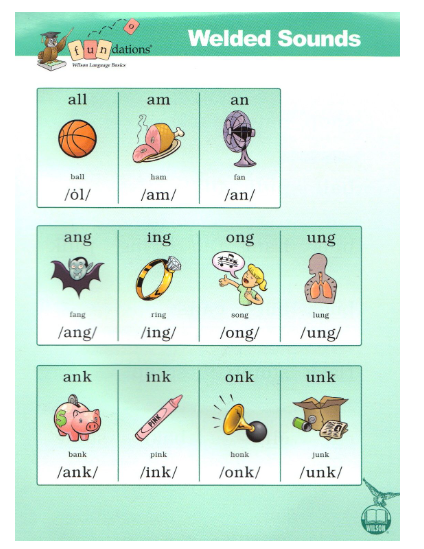
atypical long vowels – old (cold, gold), ind (find, blind), ild (wild, child), ost (ghost, most), olt (bolt, colt), old (cold, bold)
Vowel Team Generalizations
- ai is usually followed by an n or l: sail, main
- oa is almost always used in 1 syllable words ONLY: boat, roast
- ie is reversed after c: receive. Remember i before e, except after c, or when sounding like a as in neighbor and weigh: chief, ceiling
- eigh is very rare. This mnemonic includes the most common eigh words: Eight neighbors weigh as much as a freight of sleighs.
- oe is rare for the long oo sound. The most common words are shoe and canoe. Remember this mnemonic: Joe hit his foe with the toe of his shoe while in a canoe.
- an e is added in the following words freeze, sneeze, house, rose because of the long vowel sounds or have a diphthong (ou in house).
diphthongs make 2 vowel sounds in 1 syllable – au/aw, ew/oo, oi/oy, ow/ou
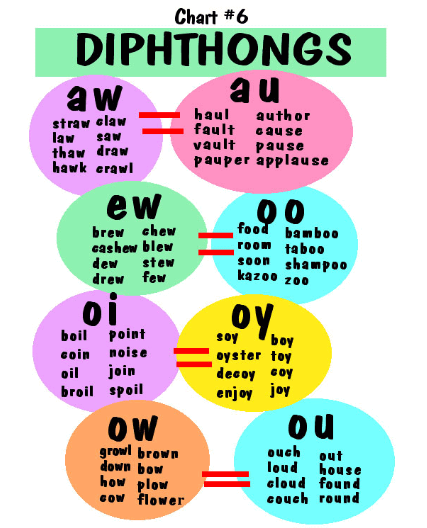
Generalizations About Diphthongs
- oi is used in the middle of words: soil Spelling Rules and 44 Phonemes
- oy is used at the end of a syllable: oyster, boy
- au is used in the middle of words: cause
- augh is very rare for au. The following mnemonic includes the most common augh words: The haughty naughty daughter caught the cat and taught him how to slaughter.
- aw is used at the end of a word or in the middle if the word ends in a single n or l: lawn, crawl
- ou is used in the middle of words: house
- when ough is followed by t, it makes the /aw/ sound as in bought, if not, it makes the long o sound as in dough
- ow is used at the end of words or in the middle if the word ends in a single n, l, er: down, growl, shower
- ew comes at the end of a syllable: chew
- ue comes at the end of a syllable; ue is a rare spelling for the long oo sound. Here is a mnemonic with the most common words: Sue got glue on her blue dress.
- ui is a rare spelling for the long oo sound. Here is a mnemonic with the most common words: A waiter on a cruise spilled fruit juice on a man’s suit and got bruised in the eye.
2 sounds of oo – school, moose, book, cook – The long sound of oo as in “boot” occurs more frequently than the short sound as in “book.” So, when a child is stuck on an oo word, have them try the long sound first!
2 sounds of ow – snow, plow
3 sounds of y – yellow, sky, baby (/y/at the beginning of words, long i at end of 1 syllable words, long e at the end of 2 syllable words)
r-controlled vowel or bossy r ~ r next to a vowel controls the vowel – car, corn. The vowel is neither long nor short.
ir, ur, er makes the same sound! Her turn first! Her bird burps.
- ir usually occurs in nature words (bird, fir, birch), clothing words (shirt, skirt), number words (first, thirteen). If you hear /m/, /d/, /t/, or /th/ after the /er/ sound, the spelling is usually ir (squirm, squirt).
- ur usually occurs in words associated with pain (hurt, burn, turmoil, burden, blurt), words with ture (nature, immature), and days of the week (Thursday, Saturday).
- er is most common and usually occurs at the end of words (her) and is a suffix (faster, slower)
wa – water, watch, want, wash ~ sounds like wo
war – sounds like wor – warm
wor – sounds like wer – worm, worst, work
Spelling – Prefixes and Suffixes – Identify the Base Word 1st!
morphology – Prefix_Suffix_Root_list_chart_R1
check out this suffix pdf – suffixes
suffix ful – ful has one l ~ joyful
65% of suffixes we use are s, ed, es, ing.
There are no spelling changes when we add a consonant suffix s, ful, less, ly ment, but drop the final e in the base word for a vowel suffix ed, es, ing, ive, y.
Past tense ed has 3 sounds – after t or d it makes the ed sound and makes the ed syllable: painted, wanted, crowded, sounded
When the verb ends in a voiced sound other than /d/, the ending is pronounced as /d/ as in called, screamed, yelled, listened
When the verb ends in a voiceless consonant other than /t/, the ending is pronounced as /t/ as in asked, laughed, fixed, bumped
Does it Double? Double the final consonant if:
- the word has one syllable
- the word ends in one consonant
- there is only 1 vowel before the consonant
- 1 vowel begins the suffix, for example, ing, ed
big, bigger, bigness fret, fretting, fretful
This is called the 1:1:1 rule – if there is 1 syllable, 1 vowel, 1 consonant after the vowel, we double the final consonant before adding the vowel suffix – ed, es, ing, ive, y.
if the noun ends in s, ss, x, z, ch, sh, and there’s more than 1: add es – it sounds like /ez/
buses, benches, foxes, bushes, buzzes
if the noun/verb ends in y: change the y to i and add es or ed IF there is a consonant before the y
pennies, babies, carried, hurried, not when there is just a vowel touching the y: boys, plays
Final y after a vowel remains unchanged when adding any suffix: stayed, payment, payable BUT if there’s a consonant before the y change the y to i: pitiful, copied Spelling Rules and 44 Phonemes
if the noun ends in f – Change the f to v and add es
leaves, knives, but other times you don’t: fifes, roofs
some plurals are irregular – men, teeth, feet, mice, fish, deer. . .
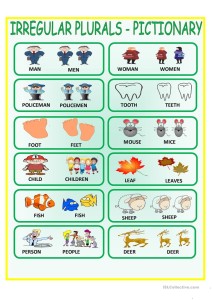
Possessives
- When the noun is singular use: ‘s ~ child’s ball, Meg’s dress
- If the noun is plural, use s’ as in boys’ room, BUT if the plural form does NOT end in an s, use’s as in men’s room
- On personal pronouns, you do not use an apostrophe as in his, her, their, but if the pronoun is an indefinite possessive pronoun use: ‘s: one’s, everybody’s, anyone’s
plural for letters and figures – Use: ‘s ~ 8’s, t’s, dot all of your i’s
plural for nouns ending in o – Nouns ending in o after a vowel form the plural by adding s: studios
Spelling Rules and 44 Phonemes
Spelling Rules and 44 Phonemes
Copyright 05/04/2012
Edited on 09/10/2023
Reference
Mnemonic sentences came from Project Read.
Copyscape alerts me to duplicate content. Please respect my work.

![]()
